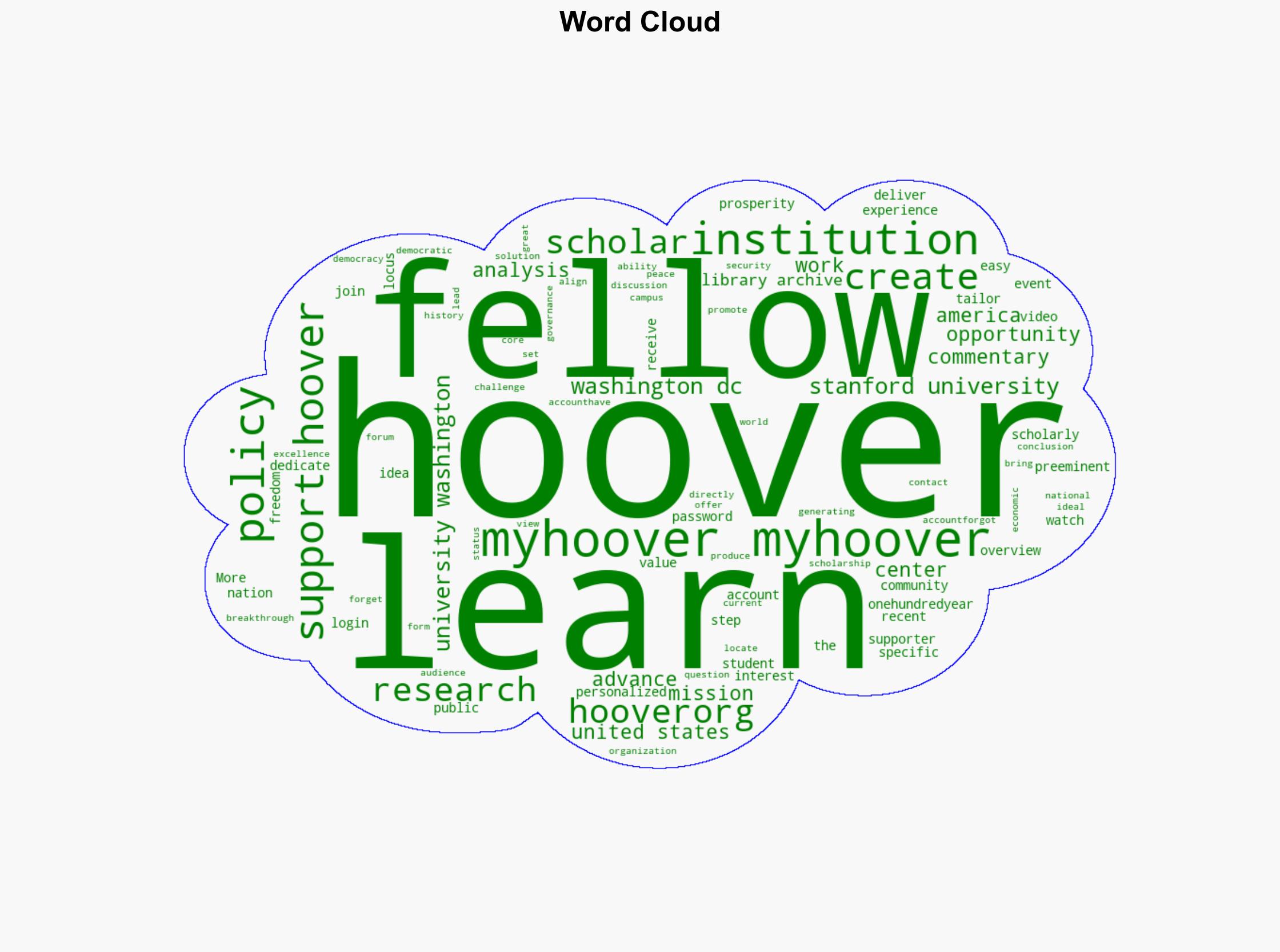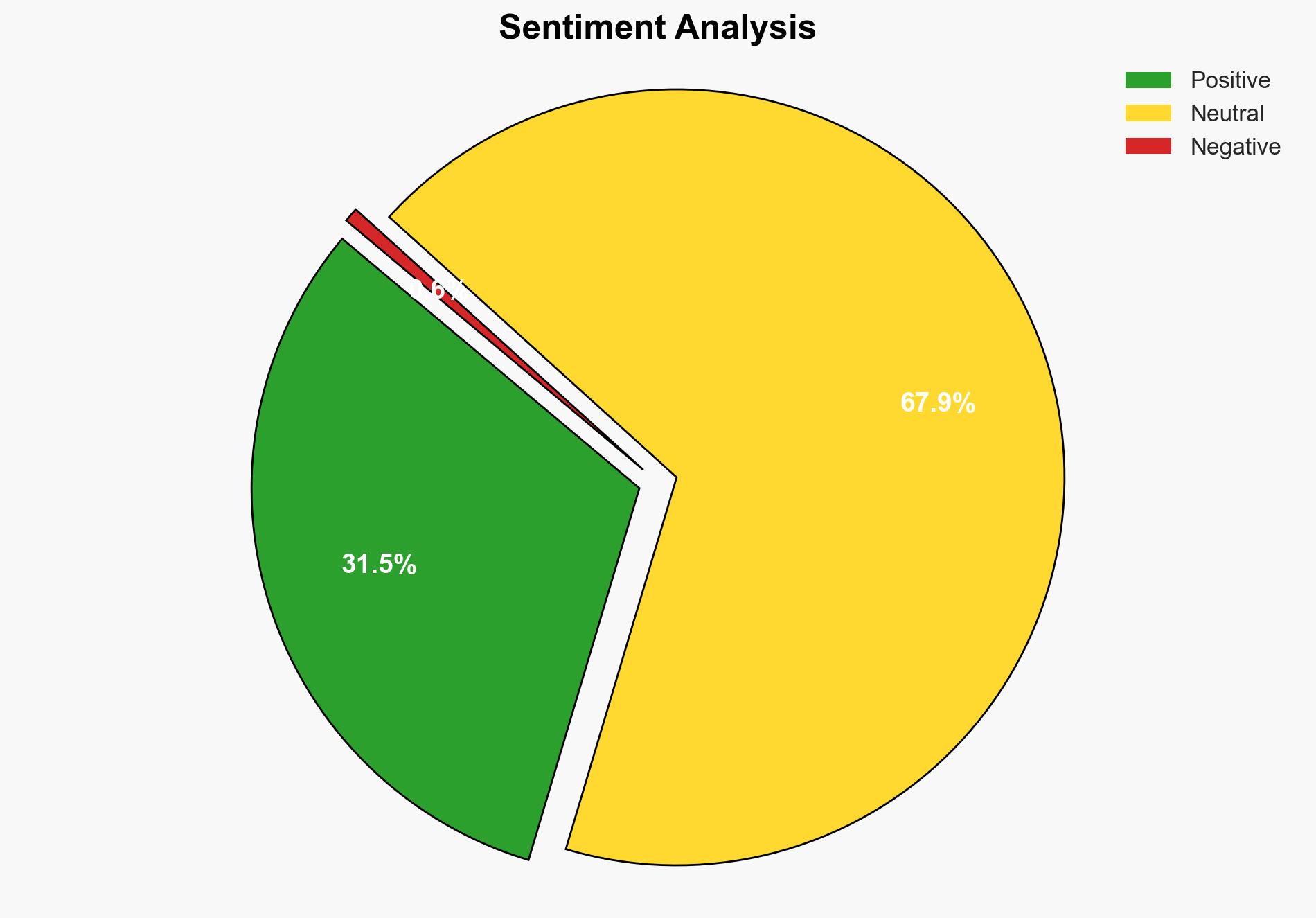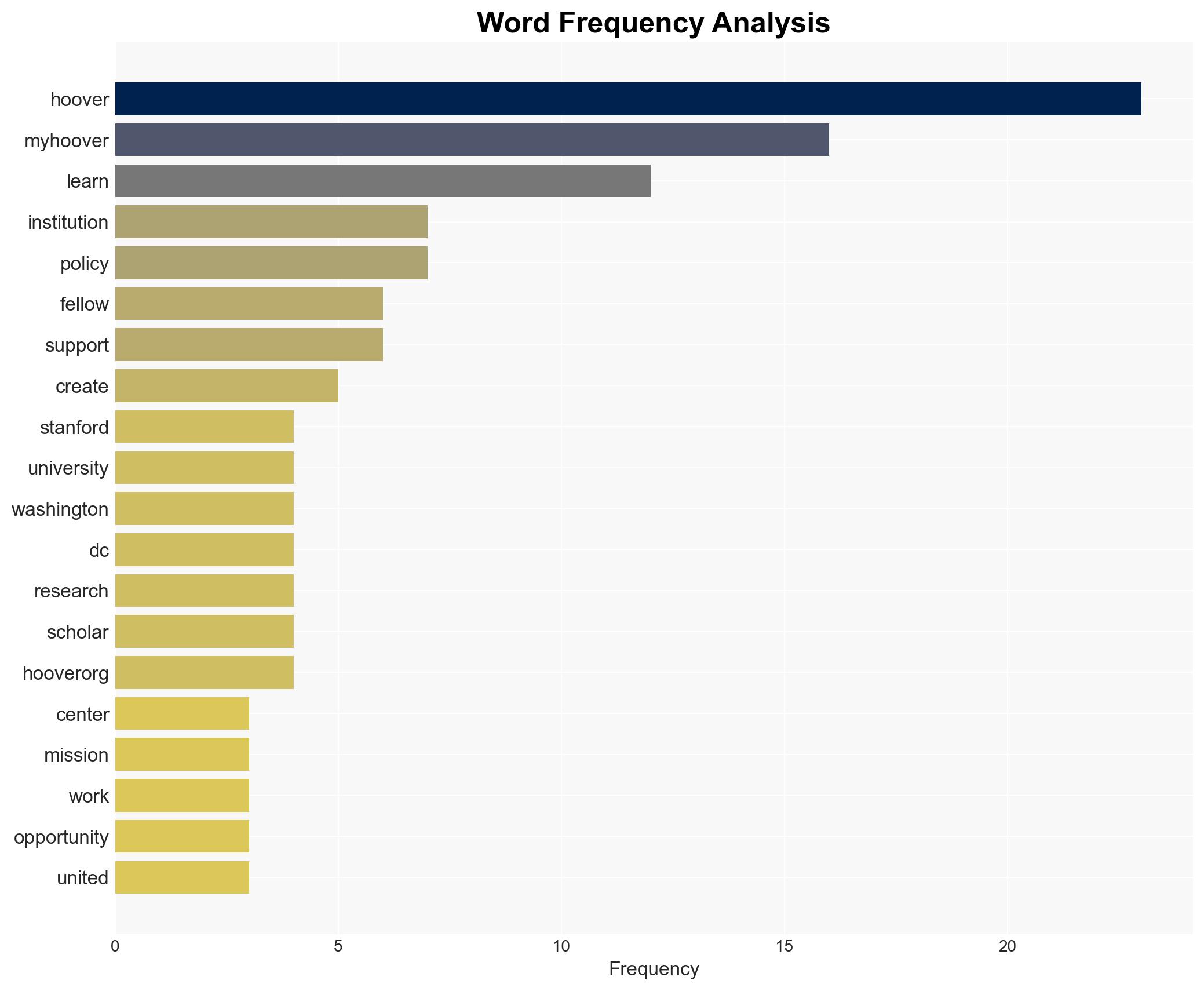Inside The Markets Aggregating Political Reality – Hoover.org
Published on: 2025-11-19
AI-powered OSINT brief from verified open sources. Automated NLP signal extraction with human verification. See our Methodology and Why WorldWideWatchers.
Intelligence Report:
1. BLUF (Bottom Line Up Front)
The Hoover Institution is strategically positioned to influence U.S. policy through its research and public engagement. The most supported hypothesis is that the institution will continue to leverage its academic resources to shape policy discussions, particularly in economic prosperity and national security. Confidence Level: Moderate. Recommended action: Monitor Hoover’s publications and events for emerging policy trends and potential shifts in U.S. governance strategies.
2. Competing Hypotheses
Hypothesis 1: The Hoover Institution will maintain its current trajectory as a leading think tank, focusing on promoting economic prosperity and national security through scholarly research and public policy engagement.
Hypothesis 2: The Hoover Institution may pivot towards a more active role in direct policy advocacy, potentially influencing legislative processes and national policy decisions more directly.
Hypothesis 1 is more likely given the institution’s historical focus on research and public discourse rather than direct political lobbying. The evidence suggests a strong commitment to academic excellence and public policy dialogue.
3. Key Assumptions and Red Flags
Assumptions: The Hoover Institution will continue to prioritize academic research over direct political advocacy. The institution’s influence is primarily through thought leadership rather than political lobbying.
Red Flags: Any significant increase in direct political lobbying activities or shifts in funding sources could indicate a strategic pivot towards more active policy advocacy.
4. Implications and Strategic Risks
The Hoover Institution’s influence on policy could lead to shifts in U.S. domestic and foreign policy, particularly in areas of economic and national security. A potential risk is the polarization of policy discussions if the institution’s outputs are perceived as politically biased. Additionally, increased engagement in policy advocacy could expose the institution to reputational risks if perceived as aligning too closely with specific political agendas.
5. Recommendations and Outlook
- Continue monitoring Hoover’s publications and events to identify emerging policy trends.
- Engage with Hoover scholars to understand potential shifts in policy focus areas.
- Best-case scenario: Hoover’s research leads to innovative policy solutions that enhance U.S. economic and national security.
- Worst-case scenario: Hoover’s activities become overly politicized, diminishing its credibility and influence.
- Most-likely scenario: Hoover maintains its role as a leading think tank, influencing policy through research and public discourse.
6. Key Individuals and Entities
Key individuals include Hoover scholars and fellows who contribute to the institution’s research and policy discussions. Specific names are not provided in the source text.
7. Thematic Tags
Regional Focus, Regional Focus: United States
Structured Analytic Techniques Applied
- Causal Layered Analysis (CLA): Analyze events across surface happenings, systems, worldviews, and myths.
- Cross-Impact Simulation: Model ripple effects across neighboring states, conflicts, or economic dependencies.
- Scenario Generation: Explore divergent futures under varying assumptions to identify plausible paths.
Explore more:
Regional Focus Briefs ·
Daily Summary ·
Support us





